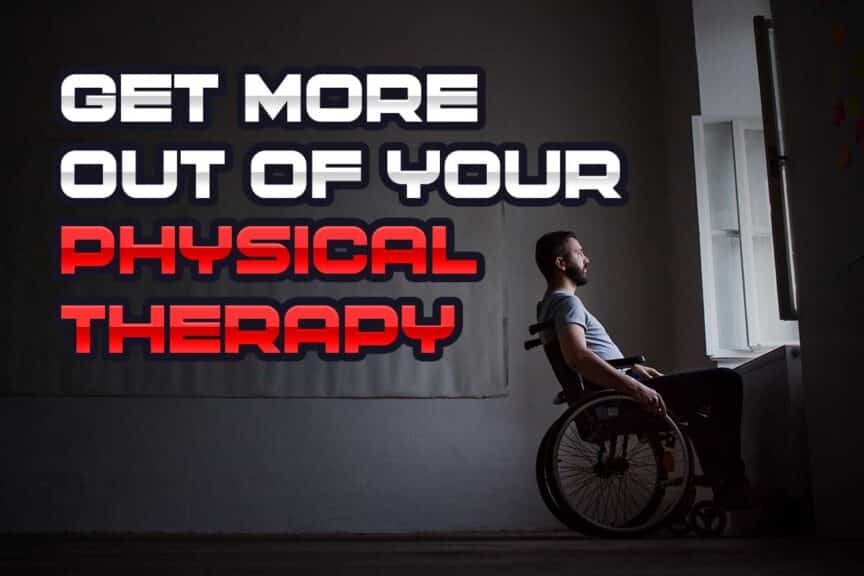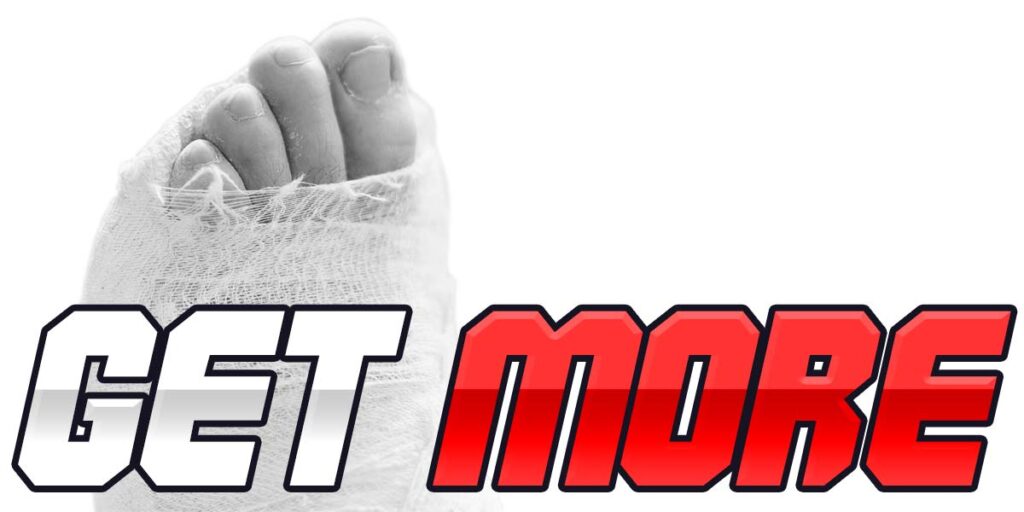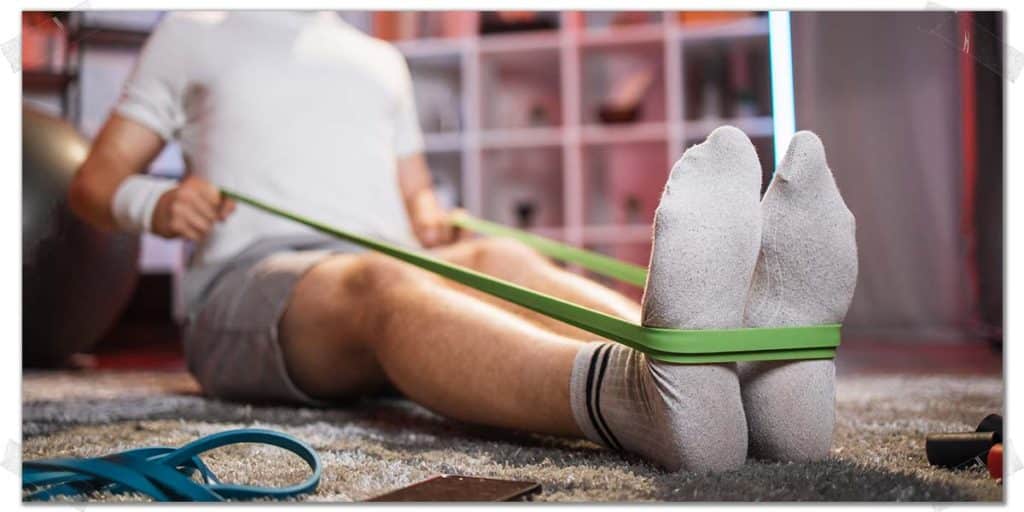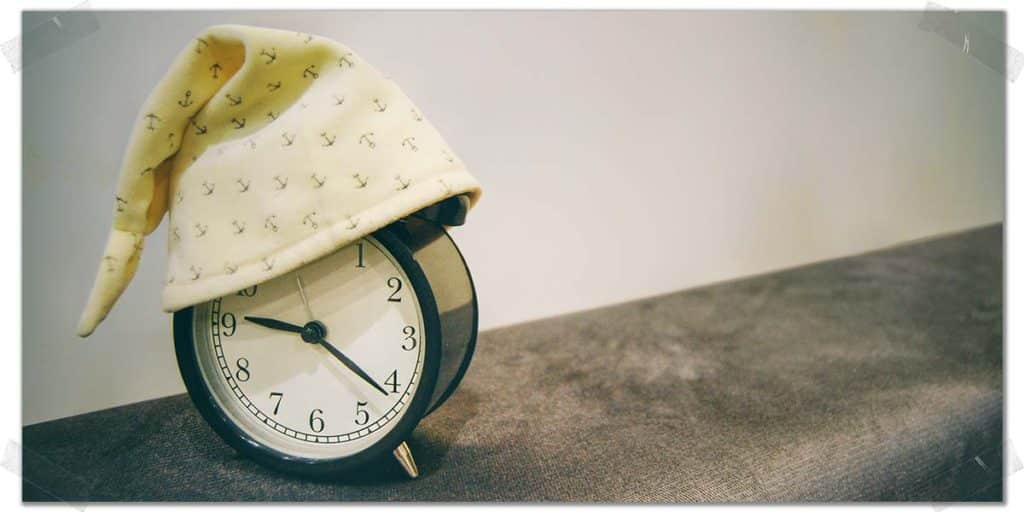Going to physical therapy isn’t exactly a fun experience for most people. So, if you’re going to go through a less-than-ideal experience, you might as well get the most out of it as possible. This will speed up your recovery, but it will likely cut down on the overall number of treatment sessions you’ll need to attend. This can save immense amounts of time, money, and energy as a result.
Getting the most out of physical therapy requires a strong therapeutic alliance, understanding your condition, prioritizing your recovery, consistency, a supportive network, and patience. These primary factors can significantly help reduce pain and regain function for your therapeutic recovery.
Below are critical actions you can take that have been shown to help optimize the overall treatment and recovery process with patients who are attending therapy. Implement any and all of them that are appropriate for you. Remember, going through physical therapy might not be easy or enjoyable, but you can minimize the struggles and frustrations by ensuring you’re getting the most out of the overall process.
ARTICLE OVERVIEW (Quick Links)
Click/tap any tip below to instantly read that section!
• Tip 1: Write down your questions
• Tip 2: Communicate openly
• Tip 3: Take an active role in your recovery
• Tip 4: Learn about your condition
• Tip 5: Prioritize your recovery
• Tip 6: Do your homework
• Tip 7: Consistency is king
• Tip 8: Surround yourself with support
• Tip 9: Keep a healthy mindset
• Tip 10: Fuel yourself appropriately
• Tip 11: Get your sleep
• Tip 12: Remember to be patient
• Bonus tip: The therapeutic alliance
Tip 1: Write down your questions
Whether you’re heading in for your very first session or you’ve already had a handful of treatments, consider writing down any questions that you may have about the overall treatment process, your injury or overall condition, what you should or shouldn’t be doing while you recover, the expected timeline of your recovery, etc.
Ask them to your therapist so that you can start gaining a preliminary understanding of things, which can greatly help to put your mind at ease.
Related article: Nervous About Going to Physical Therapy? These Pro Tips Can Help
As physical therapists, the more we can help you understand what’s going on and educate you on the specifics of your situation, the better your overall recovery will likely be. Research shows that patients who better understand the nature of their pain and condition experience better outcomes than those who don’t.1-4
Don’t be afraid to ask too many questions! As physical therapists, we tend to find that the patients who ask the most questions are generally the ones who are most invested in their recovery, which is a good thing!
Pro tip: It’s easy to forget questions you want to ask. Write down any questions you want to ask as soon as they pop into your mind. Whether right before treatment or a week away, write them down on your phone, in a notebook, etc., to ensure you don’t forget them!
Tip 2: Communicate openly
Communication is absolutely everything when working with a physical therapist and optimizing your recovery. It’s important that you let your therapist know how you’re feeling — physically, mentally, emotionally, etc. You don’t need to provide highly personal or sensitive information, but simply letting your therapist know where you’re at for the day and how you’re feeling overall can go a long way.
Pro Advice: Find the Best Physical Therapist for You With THESE Tips
It’s hard for us as therapists to know how best to proceed with the treatment process if you’re trying to hide your pain or failing to disclose how things are feeling or where you feel things are currently at with your recovery.
Building up a sense of trust or open communication can take a bit of time, so we certainly don’t expect patients to feel entirely comfortable on day one. But the more open you can make yourself when it comes to telling us where you’re at, the better we can adjust and fine-tune the treatment path forwards to help you experience the best recovery possible.
Tip 3: Take an active role in your recovery
Going through physical therapy really is all about teamwork. As therapists, we can provide a lot of valuable information, do a lot of specific treatment interventions, and utilize a lot of specific skills for your needs. But most of the time, your recovery will be quicker, further enhanced and overall much more effective when you take an active role in addition to any sort of passive treatments we perform for you.
Essentially, taking an active role in your recovery is all about making an effort to do all the right things (performing therapeutic movements or exercises) while also striving to avoid all the wrong things (activities that worsen pain, impede your recovery, etc.).
Related article: Physical Therapy Exercises: Here’s How to Stick to Them for Success
Passive treatments are the types of treatment where the physical therapist does the work for you (massage, mobilization, adjustment, etc.) or utilizes a therapeutic device on you.
Active treatments are movements and exercises that you actively perform on yourself. These can be stretches, strengthening exercises, movement retraining exercises, etc.
Your physical therapist can’t do everything for you, and the science is pretty clear that those who take an active role in their recovery experience better outcomes than those who don’t. Stay engaged with your rehab and accept the fact that the best outcomes are achieved by those who take an active role in their road to recovery.
Tip 4: Learn about your condition
The more you know about your injury or condition, the better you understand how it occurred, what the recovery process looks like, the better off you’ll likely be. Learning about what’s going on with your body or what your pain signifies can arm you with a powerful sense of control.
Your therapist will be able to provide you with information about your situation, injury, or condition, which will be an excellent starting point. They might have additional information that they can provide you with for further learning or insight as to what you’re currently up against.
Whether it’s a sprained ankle, a systemic disease, or anything in between, your therapist will be able to help you get the ball rolling for helping you gain pertinent insight. From there, make an effort to better understand what’s going on. Doing so will give you a greater sense of control when it comes to your rehabilitation.
Tip 5: Prioritize your recovery
Ideally, your mindset around your recovery won’t stop once you’ve finished your treatment for the day or completed your home exercises. Recovery can be thought of as a 24/7 commitment or process.
If you perform one hour of therapy or home exercises per day, that still leaves twenty-three hours left in the day for your body to either be positively or negatively influenced by everything else you do (or don’t do).
If you genuinely want to get the most out of your physical therapy, you should consider putting your well-being and recovery at the forefront of your daily activities or pursuits. Often, it may come in the form of making small sacrifices or going out of your way to ensure you’re giving your body as much self-care as possible or appropriate.
This does not mean that you’re actively doing exercises or movements all day long; rather that you’re being mindful of how else you might be positively or negatively influencing your recovery based on everything else you’re putting your body through in the meantime. Implementing tips 8, 9, and 10 are all great examples of how you can prioritize your recovery.
Prioritizing your recovery implies that you’re placing it above other situations and activities that might otherwise impede your therapeutic progress. If you opt to do this, you’ll likely experience fewer setbacks and quicker improvement in your injury or condition.
Tip 6: Do your homework
This relates back to tip 3, which discussed taking an active role in your rehab. Depending on the nature of your injury or condition, you’ll likely be given exercises to perform as part of your home exercise program. As physical therapists, we often refer to this as “homework.”
Related article: Here’s How Often You Should Be Doing Your Physical Therapy Exercises
Remember, your home exercises are for your benefit — not for ours. While we understand that things can come up that derail the day and leave no time for performing home exercises, we want you to understand that the more diligent you are with doing your homework, the quicker your rehabilitation will move along and the fewer treatments you’ll likely need.
Pro tip: I like to tell my patients to think of their home exercises like brushing their teeth; it’s just something that’s a part of your life that you don’t think twice about. It takes up an incredibly small portion of your day, and it feels awkward if you don’t brush them. Think of your exercises in the same manner — they’re just a part of your life for the next while or the foreseeable future.
Tip 7: Consistency is king
Constant dripping hollows out a stone. While it would be absolutely wonderful if we could get our patients instantly better by snapping our fingers, we, unfortunately, don’t live in that kind of world.
Physical rehabilitation is often about playing the long game. And consistency reigns king when it comes to recovery. Depending on the extent of your injury or condition, you’re likely best off adopting a mindset that acknowledges and accepts the reality (and importance) of being consistent with the steps and effort required for recovery.
It’s not sexy-sounding advice, but it’s the truth.
Pro tip: Consistency with exercise is all about behaviour. If you can set behaviour-based goals for your recovery, you’ll likely find it much more manageable to stick with your exercises on a consistent and sustainable basis.
Tip 8: Surround yourself with support
Though not always something that you can change, if you can surround yourself with supportive individuals and people who understand what you might be going through, it can provide numerous benefits, including:
- Reduced levels of stress and frustration
- Increased motivation for continuing with your recovery
- Improved social and mental health
- Reduced levels of perceived helplessness
If you don’t have any supportive friends or family members, you’ll very likely be able to find a group or community online that you can reach out to and interact with.
Whether they’re in town and you can physically meet up with them, or they aren’t close by, and you can only interact online, a supportive individual or group of individuals can make profound differences as you work through your recovery.
Tip 9: Keep a healthy mindset
The power of a positive mindset can’t be overstated enough. But this doesn’t mean you lie to yourself and tell yourself everything is just fine if you’re in fact, not feeling that way. A positive mindset is able to openly acknowledge the struggles or challenges you might be feeling but continues to look for the benefits to be had from the situation.
Much easier said than done, I know. I struggle with it too.
But I also know the benefits that doing so can provide.
Arguably, my favourite way to frame my injuries, pain, or general issues I might be up against is to remind myself that going through them uniquely qualifies me for speaking life into others who might one day go through what I’m currently battling against myself.
Acknowledge the struggle, but choose to follow it up by looking around for the benefits of the situation immediately after. It’s tough to do — trust me, I get it — but if you can do your best with this, it truly can help you push along in your recovery when you might otherwise feel like giving up.
Tip 10: Fuel yourself appropriately
Every cell within your body was once food that you ingested. It really is true that “you are what you eat.”
Eating a healthy diet that minimizes highly processed foods and large amounts of sugar, and other pro-inflammatory foods can help with optimizing your injury recovery.5-7
This, of course, is not an overnight solution, so you’ll need to commit to eating a cleaner diet, likely for a month or two, before perhaps feeling a noticeable improvement. However, the good news is that you don’t need to eat a perfect diet to experience the positive effects; even cleaning up your diet by just 10% may have substantial improvements in your mood, energy levels, and even pain levels.
Here are some general tips to get you started:
- Aim to minimize consumption of processed foods and junk food; these tend to be highly inflammatory foods that likely won’t offer any benefit to your body’s ability to feel better and recover.
- Drink plenty of water. Adequately hydrating the body can go a long way toward helping your body feel better throughout the day.
- Aim to “eat the rainbow,” meaning eating vegetables of various colours. The result is a greater variety of phytonutrients, vitamins and minerals, which your body will put to good use for helping to optimize the physical health and recovery of your body.
Tip 11: Get your sleep
There has been extensive research devoted over the past decade to the effects of sleep on injury recovery and overall health. The findings are pretty supportive across the board of proper sleep hygiene being a powerful factor in the body’s abilities to recover to a much greater extent and experience more significant overall improvements.8-10
If you’ve just recently experienced a significant physical injury (accident, surgery, etc.), consider prioritizing your sleep if you haven’t already done so. Sleep really is showing to be a game-changer for improving healing within the body and even preventing injury as well!
Tip 12: Remember to be patient
While recovery (be it partial, near-complete, or complete) is possible, it most often takes time. How long it will take is very specific to you and your injury, condition and overall situation. But, for nearly everyone, it can seemingly never come soon enough.
Have patience to the best of your abilities. There will be good days, and there will likely be bad days. If you want to get the most out of your physical therapy, you’ll need to be patient.
If you’re not patient enough, you might throw in the towel too early, perhaps right before the benefits start showing up. Imagine putting in all that time and effort only then to give up right before things start taking a turn for the better. How brutal would that be?
Be consistent and give it a bit of time. You won’t have to wait forever before you likely start to see or feel improvements. Still, you’ll likely have to put in the work for a bit while experiencing a lack of perceptible improvement before you notice things changing for the better.
Bonus tip: The therapeutic alliance
In order to have the best chance possible when it comes to your physical therapy and experiencing optimal outcomes, you’re going to want to have a strong therapeutic alliance with your physical therapist.
This alliance refers to the capacity in which you and your therapist work together on all aspects of your therapy. Factors such as communication, trust, mutual understanding, openness, and respect are critical components of fostering a solid and optimal patient-practitioner relationship.
The stronger and healthier each of these factors (among others) is, the more enjoyable, effective and rewarding the rehabilitative process will likely be.
Do your best to work with your therapist in a way that strengthens and optimizes these and other factors that all contribute to an overall stronger therapeutic alliance. Doing so will go an incredibly long way in helping you get the most out of your physical therapy.
Final thoughts
I hope you were able to get something meaningful out of the tips within this article and that they will assist you in getting the most out of your physical therapy journey and your overall path to recovery.
If you found this article helpful, please consider sharing it with anyone else whom you think may be able to benefit from its contents!
I wish you all the best in your efforts toward healing and recovery. Hang in there, and don’t give up hope!
References:
4. Butler DS. The Sensitive Nervous System. Noigroup publications; 2000.
6. Tipton KD. Nutritional support for exercise-induced injuries. Sports Med. 2015;45(1):93-104.

Hi! I’m Jim Wittstrom, PT, DPT, CSCS, Pn1.
I am a physical therapist who is passionate about all things pertaining to strength & conditioning, human movement, injury prevention and rehabilitation. I created StrengthResurgence.com in order to help others become stronger and healthier. I also love helping aspiring students and therapists fulfill their dreams of becoming successful in school and within their clinical PT practice. Thanks for checking out my site!










